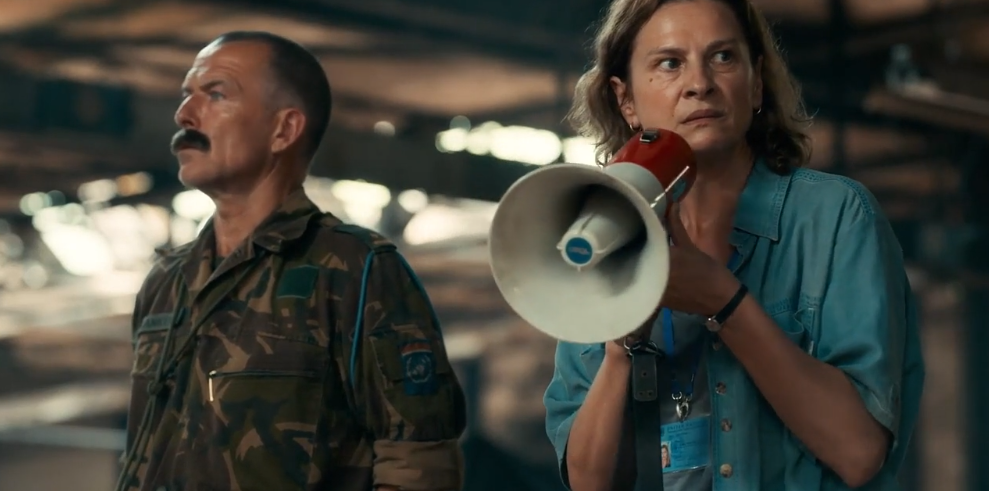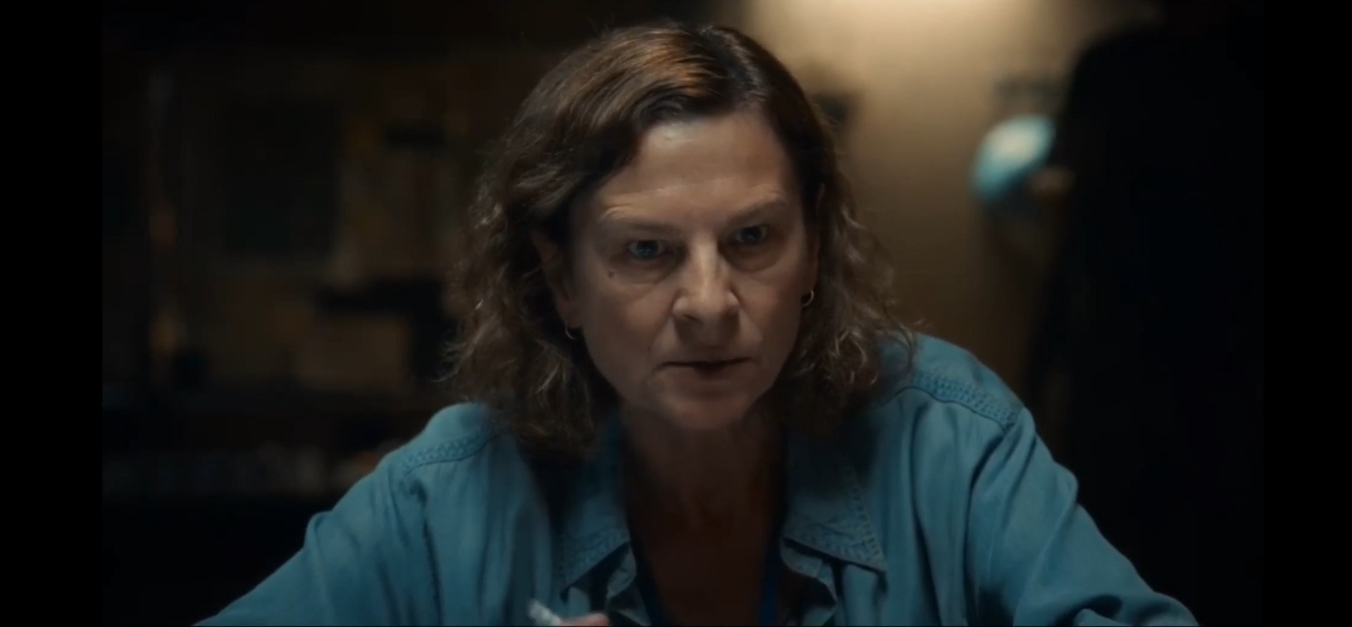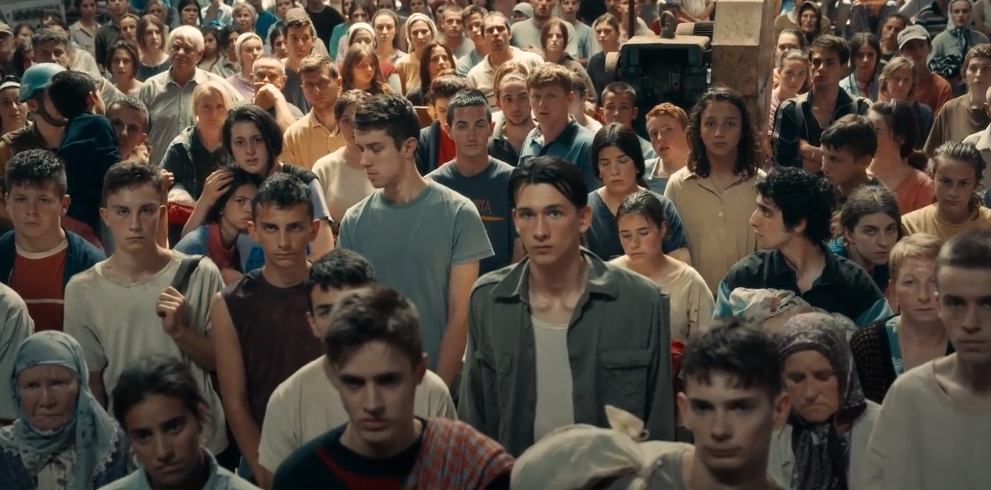The book cover of the Susan Massotty translated version of Anne Frank’s Diary (1947) claims that the book “remains a beloved and deeply admired testament to the indestructible nature of the human spirit”.
It enrages me when discussions on war, genocide, massacres, pogroms and systemic rapes – acts and events which displayed the worst of humanity – take a turn towards saluting the resilience and endurance of the human spirit in the face of adversity or conflict. To me, stories about massacres are reminders of the ever-present threat of death and estrangement. Of the terrifying potential of human power to turn the ordinary into extraordinary at any given point.
As I write my review of Jasmila Žbanić’s Quo vadis, Aida? (2020), millions of farmers in India are protesting. In what might be the largest organised strike in modern history, they’ve taken to the streets because of three agricultural laws passed by the current government that threaten their livelihood. Hundreds have lost their lives due to degrading health conditions on the protest grounds and clashes with the police (the police have lost lives too). There are reports of physical (roads dug out, water supplies cut) and digital (internet services) blockage in the protest areas. The Indian government’s crackdown upon the farmers’ protests is yet another example in a series of human rights violations taking place in the country since the Modi government first came to power. Every day we wake up with the dread of what freedom will be taken away from us next. The strains of disenfranchisement are especially unbearable because we have tasted freedoms before.
At a time of moral panic like this, Jasmila Žbanić’s Quo vadis, Aida? (2020) hits differently. The film documents an event from the twentieth century – the period in modern history which was fraught with wars and violence. The Srebrenica genocide, however, marks a point from when on, the scales of authoritarian violence rose to such an extent that the ruling powers no longer felt the need to justify oppression through a political goal or ambition.
Quo vadis, Aida? does not care about paying ode to the resilience of the “brave” or the dead. It doesn’t want to embrace the past or place flowers at the tombstone of the guiltless dead. It wants to question the veracity of the existence of the human spirit and the foundation that civilization rests upon.
United Nations translator Aida (Jasna Đuričić) is a woman amongst men. She occupies a table with men in uniform. She is tense, smokes a cigarette, and negotiates safety for her people, “What will happen if the planes don’t come?”
It is July 1995, the fateful day of the Srebrenica genocide when thousands of Bosnian Muslim men and boys were massacred by the Bosnian Serbian Army at the UN-protected city of Srebrenica. The film chronicles the day’s activities and Aida’s attempts at trying to save her family.
We see a battered city. Trampled upon by military cars and men. Inside a warehouse-like place, hundreds of civilians are cramped up. We do not see anyone eating. We learn that the supplies are running out. An old lady really needs to go but the toilets are shut down. UN officials are making and attending calls, carrying out their conflicting duties. Dispatching men like goods to safety. “Wounded ones to the right.”
There is tension, fear and vulnerability in the air. In the midst of chaos, we see Aida running from pillar to post to get the officials to put her family on the UN Officials List.
In Aida’s face, we see the distress and anxiety that comes with prolonged anger. It is the face of someone who has lived a life of dignity before. The plight of a consciousness that is aware of the cruel discrimination meted out to them and is fighting for her last shot at saving grace. Commanders of death are at the door and she’s asking the UN officer to enlist at least one of her sons.
Quo vadis, Aida? is not a documentary, though it seeks to document an infamous historical event. The creative calls taken by the director, are well contemplated and courageous. The Serbian generals, for instance, are not only modelled upon real convicted war criminals but also named in the film. Terror and authority are given a face and a machinery.
The anxiety experienced by the viewer is heightened by the choice of the social status of the population of remaining civilians highlighted in the film. Aida’s husband (Izudin Bajrović), we are told, is the most educated man in the community. She was a former teacher herself, and in a solemn moment expresses her wish to go back to teaching when the war is over. Another woman, who is chosen as one of the representatives to plead mediation and negotiation with the Serbian Army, recalls being an economist with no political connections. Even as passing introductions, these details make us imagine what a peaceful past it was like, and it makes us sadder. The clamps of injustice are felt strongly by those who have known a life of peace. Before the film’s climax, when children are shown being separated from their mothers, the population in focus are the young adults, not the infants or the babies. This amplifies terror (especially to a civilian watching in another country which is slowly losing its democratic freedoms) because freedom actually means something to an adult. To be robbed of your basic rights and infantilized is what transforms the experience of violence into oppression.
In an interview with TIFF, filmmaker Jasmila Zbanic shared that her decision to write a woman in the role of the UN translator (as opposed to a man) was motivated by the belief that it would ultimately have a wider connect with the audience. This is an important bit of information because in films about wars, usually women representation is limited to the state of victimisation, and objectification. So, the decision to make the central, resisting, and in-charge, character a woman, does bring its share of dynamic. Aida’s character’s resolve is comparable to the men through and through. Her gender also adds a narrative arc to the film, by acting as the link connecting the past with the future. Raising questions on the dead: Is mourning enough?
That most talked-about scene of her breakdown (spoiler ahead) during the carcass inspection exercise asks a question, not only on the nature of grief but also on what happens to women in war. But the question I asked myself was what portrayal of grief had hit me more – her crying or her being “brave”?
Aida is a serious film brimming with anger and frustration. Throughout the film, my forehead was in a fix in a way that I haven’t felt in a long time, thanks to Jasna Đuričić’s terrific performance. There were some things in the film which were just as I had anticipated, which sometimes flattens it in some parts. For instance, crying babies just tick me off. In a film which is already doing so much and aiming to encapsulate a full-blown emotion of frustration, sympathy for a new-born is plain distracting. It’s a nuisance. But maybe on second thoughts, it added to the chaos. I also think it would have also been incredible if the first dialogue of the film came from Aida’s mouth, and not the men on the table. It would have augmented the resilience as well as the politics of being a woman translator. On the whole, the film delivers what it set out to do. It is moving. It makes you think, question and reflect. And the transference of the effect on the viewer is a result of the filmmaker’s commitment.
Watch the trailer here.







